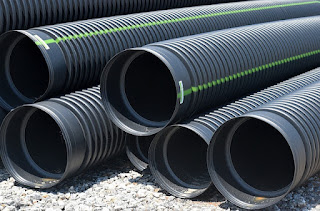Maintaining Your Home Plumbing System: Tips for Keeping it in Good Condition
Your home's plumbing system is a vital component that ensures the smooth functioning of your daily activities. From washing dishes to taking showers, plumbing plays a crucial role in your daily life. However, like any other system, it requires regular maintenance to prevent issues and costly repairs down the line. In this guest post, we will provide you with valuable tips on how to maintain your home plumbing system to keep it in good condition.
Regular Inspections
Prevention is the key to maintaining a healthy plumbing system. Periodically inspect your pipes, faucets, and fixtures for signs of leaks, corrosion, or damage. Early detection can prevent minor issues from becoming major problems. If you notice any issues, such as damp spots or water stains, address them promptly.
Be Mindful of What Goes Down the Drain
One of the leading causes of plumbing problems is the improper disposal of items. Avoid flushing non-biodegradable materials like wet wipes, paper towels, or sanitary products down the toilet. In the kitchen, dispose of cooking oil and grease in a separate container instead of pouring them down the sink. These substances can clog pipes and lead to blockages.
Maintain Proper Water Pressure
High water pressure may seem like a good thing, but it can put excessive stress on your plumbing system. Invest in a pressure regulator to ensure that water flows at an optimal pressure throughout your home. This will help prevent leaks, burst pipes, and premature wear and tear on fixtures.
Insulating your pipes in the plumbing system is a crucial step if you live in an area with cold weather. Proper insulation helps prevent your pipes from freezing, bursting, and causing costly damage to your home. Here are the steps to insulate your pipes effectively:
Gather Supplies:
Pipe insulation sleeves or foam tubes
Insulating tape or zip ties
Insulating gloves
Utility knife or scissors
Measuring tape
Identify the Pipes:
Identify the pipes that are most vulnerable to freezing. These are usually located in unheated or exposed areas like crawl spaces, attics, basements, and exterior walls.
Measure the Pipes:
Measure the length and diameter of the pipes you plan to insulate. This will help you purchase the right amount of insulation material.
Cut the Insulation:
Cut the insulation sleeves or foam tubes to the appropriate length using a utility knife or scissors. Make sure the insulation is the correct size to fit snugly around the pipe.
Install the Insulation:
Slide the insulation over the pipes, ensuring a tight fit. If the insulation has a slit along one side, simply snap it closed to encase the pipe completely. Seal any gaps or seams with insulating tape or zip ties to prevent cold air from entering.
Focus on Vulnerable Areas:
Pay special attention to areas where pipes are exposed to the cold, such as where they enter or exit the house. Use extra insulation in these areas.
Contact Pipe Manufacturers in Delhi
Insulate Outdoor Faucets:
Don't forget to insulate outdoor faucets and hose bibs using insulated covers. These are typically available at hardware stores and provide protection against freezing temperatures.



Comments
Post a Comment